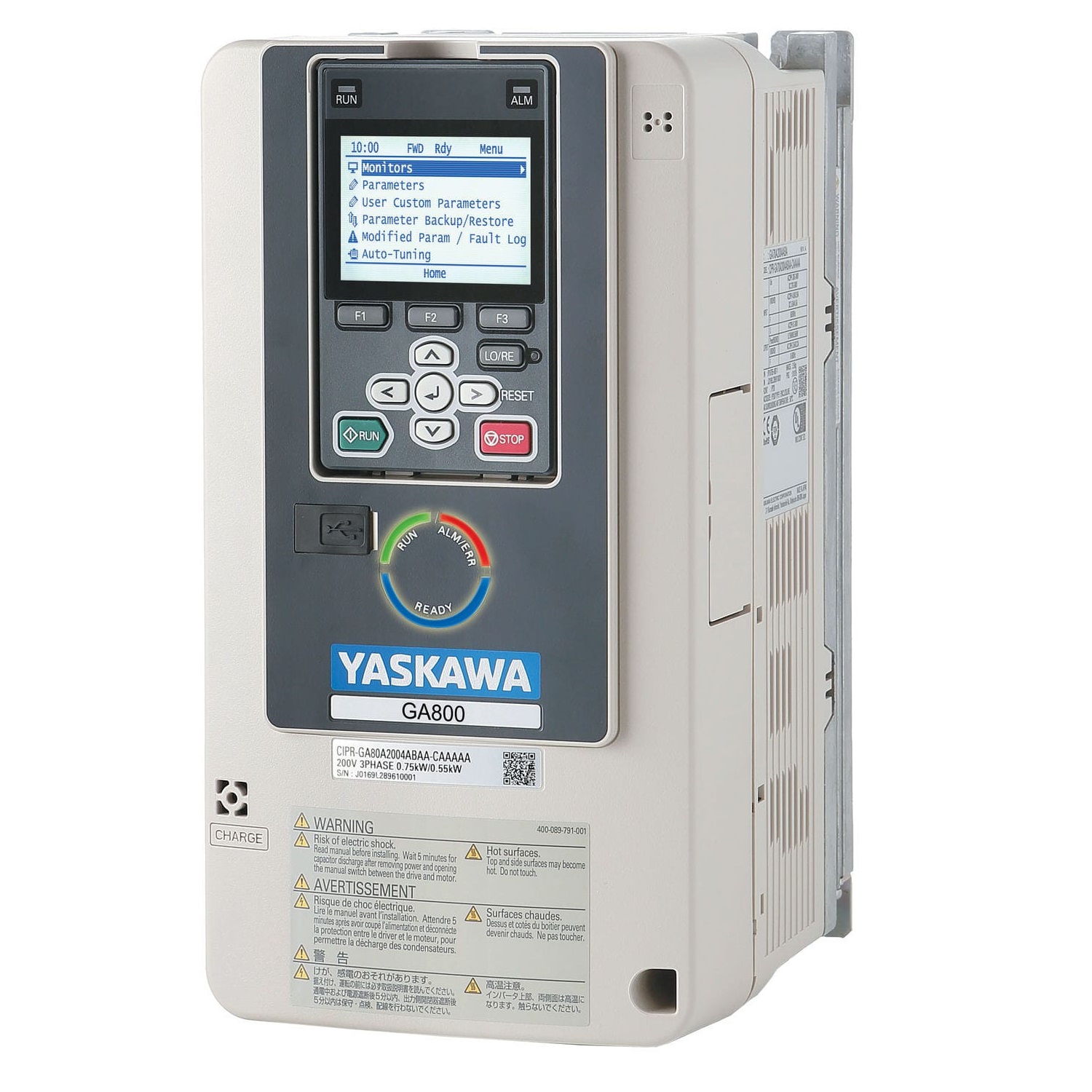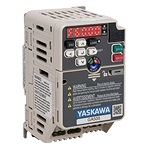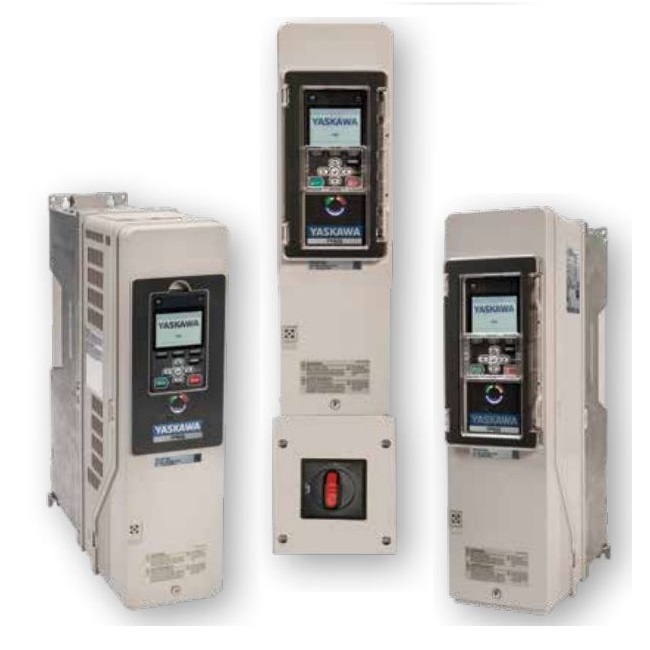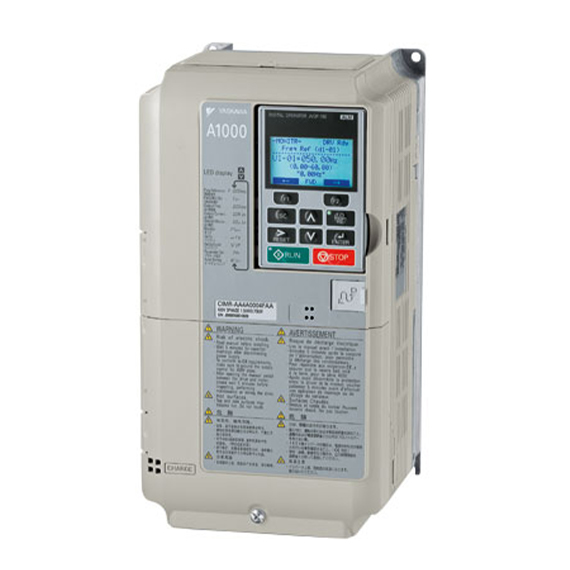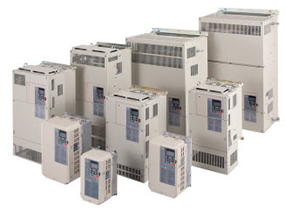A. C. Drives
Yaskawa Drives
Yaskawa Drives from Carotron cover a wide range of applications. The V1000 and P1000 models are cost-effective open-loop vector drives for fans, pumps, conveyors and other simple applications. The A1000 and GA800 models offer open-loop or closed-loop capability for handling more difficult applications which require tighter speed regulation, wide constant torque speed range or torque control capability. The U1000 model is an advanced matrix design drive that has full speed or torque control with line regen capability. The U1000’s advanced design also mitigates line and load harmonics without the need of external components. Yaskawa drives from Carotron cover a power range from fractional to 1,000 HP. Nema 1 and chassis mount units are standard with options for NEMA 12 and NEMA 4 enclosures for some models.
Carotron has engineers who are Yaskawa "Certified Drive Specialists". A CDS has undergone rigorous training and certicication with Yaskawa. The certification signifies that the individual has proficiency and expertise in the installation, programming, troubleshooting, and maintenance of Yaskawa drives. When a CDS commissions a Yaskawa product in the field, an additional year of warranty is granted by Yaskawa. Please contact us for more details.
Teco Westinghouse Drives
Lenze-AC Tech Drives
KB Electronics AC Drives
US Drives
About AC Drives
Why Have an AC Drive?
AC induction motors are the backbone of the industry. AC Drives allow these motors to be controlled to match changing speed requirements and minimize the need for gear changes for different process speeds. Pumps, fans and conveyors can be optimized in speed for the best productivity and efficiency. AC Drives also reduce mechanical wear and tear by allowing the motor to be ramped up to speed rather than the jolt of starting the motor across the line. AC drives with advanced vector technology and closed-loop encoder feedback capability can also replace DC drives and some simple servo drives in continuous web handling applications. AC drives with line regen capability can also handle winding and unwinding application. These applications typically require inverter rated motors to handle wide speed ranges and provisions for encoder mounting.Where Are AC Drives Used?
The most common use for AC Drives is for pumps, fans and conveyors. These applications can typically use a simple AC drive design in conjunction with a standard motor since the speed range is usually less than 10:1 and most pumps and fans are variable torque loads. Constant torque applications generally require an AC motor designed for wider speed ranges with auxiliary cooling and adapters for motor mounted encoders. Constant torque applications would include extruders, coaters, laminators, printers, paper machines, textile machines, and wire drawing machines.Contact Carotron for AC Drives
Carotron wants to assist you in AC Drive selection and installation. Our application engineers can discuss your machine operating specifications and provide recommendations. With 40 years of experience, Carotron will help you find the AC Drive you need to meet your operating requirements. Contact us today with your application requirements or for more information about our products and services.

